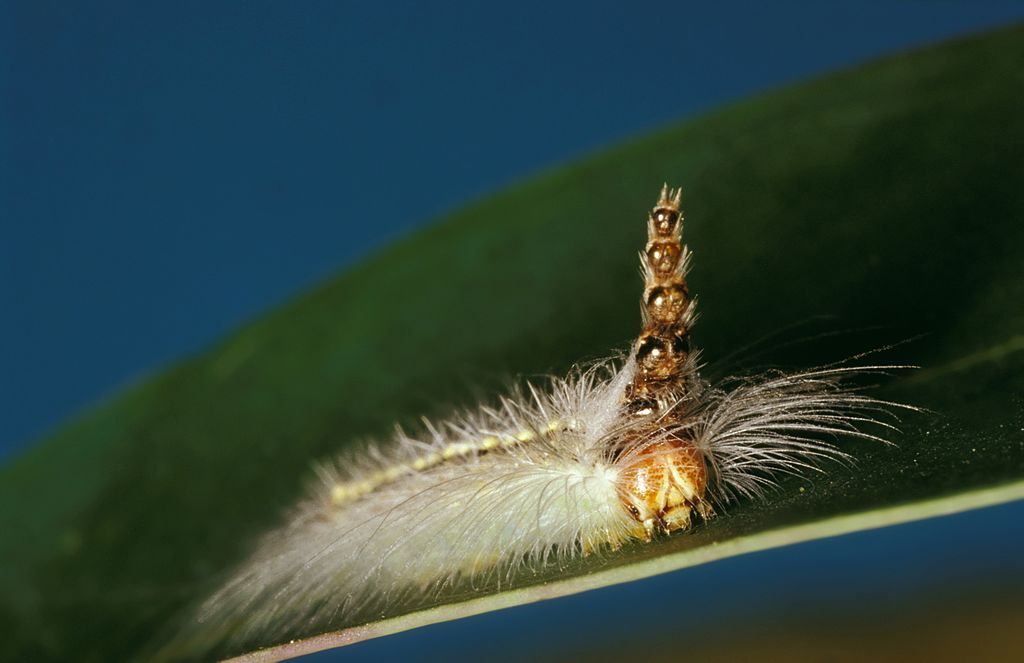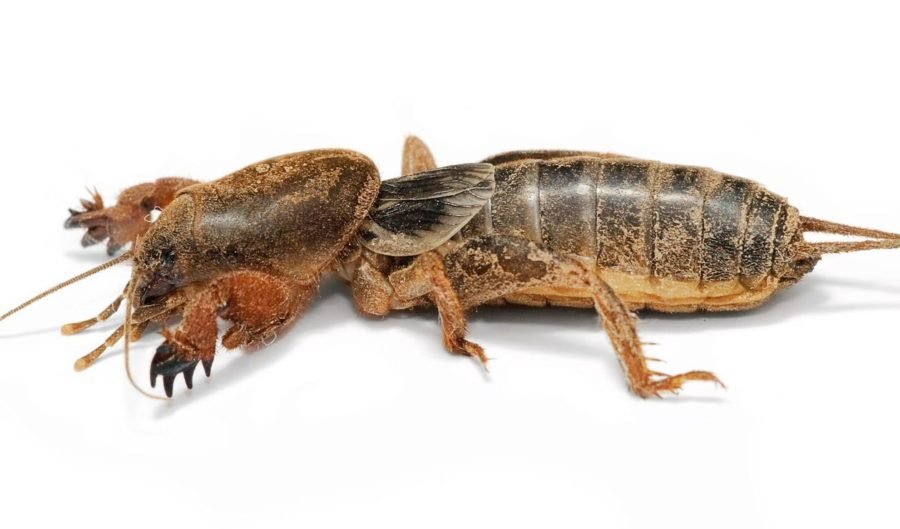The head-stacking caterpillar wears its old heads as a hat

Bec Crew
Bec Crew

SOMEONE NEEDS to give this guy a part in the next Mad Max film, because that is some post-apocalyptic warlord fashion if ever I’ve seen it.
Meet the head-stacking caterpillar, the larvae of the gumleaf skeletoniser moth (Uraba lugens). Even the name gumleaf skeletoniser is metal.
Found mainly around the south coast of Australia, Tasmania, and in southwest Auckland, New Zealand, the head-stacking caterpillar is a voracious pest, and can wreak some serious havoc if not actively controlled.
When they are very young, these caterpillars ‘skeletonise’ the leaves of eucalyptus trees by chewing around the veins. Once they grow larger and stronger, they chew through everything. Periodic outbreaks of the species have been known to decimate whole trees, sometimes killing them off altogether.
The species isn’t particularly friendly to humans, either. (The whole dressing up like a Walking Dead villain thing might have tipped you off). Those hairy fibres emanating from its body like it’s one giant unkempt eyebrow can cause severe skin irritation if you touch them.
Like many animals that are contained within an exoskeleton, the head-stacking caterpillar must moult regularly in order to grow.
While some species, like yabbies, eat their moulted exoskeleton to take in all those good nutrients, the head-stacking caterpillar delicately sheds its old head and keeps it attached. The more heads it sheds as it grows, the more elaborate its display becomes.
As entomologist Gwen Pearson says, these little guys are mad hatterpillars.
But why would such a creature, which honestly seems like it’s got a lot going for it in terms of eating and defending itself, need to wear its own desiccated noggins?
A recent study led by Petah Low, a biologist at the University of Sydney, suggests that the stacking head display serves as a protective deterrent against the caterpillar’s natural predators, such as birds, reptiles, parasitic wasps and flies, stinkbugs, jumping spiders, and lacewings.
Low and her colleagues set up a number of experiments to observe the survival rates of caterpillars with and without a head capsule stack. The stacks ranged from one to four heads high.
They found that the head capsule stack can act as a false target for predators (‘decoy mechanism’) and as a weapon against the smaller insects (‘lance mechanism’).
While the head stack ultimately did not deter predators that were particularly set on making a meal out of the caterpillar, it certainly made things more difficult for them.
You can watch them in action below. It’s legitimately strange (and a little sad, if you’re a hatterpillar):
We don’t want to leave things on a sombre note, so here’s another head-stacking caterpillar in all its glory:



